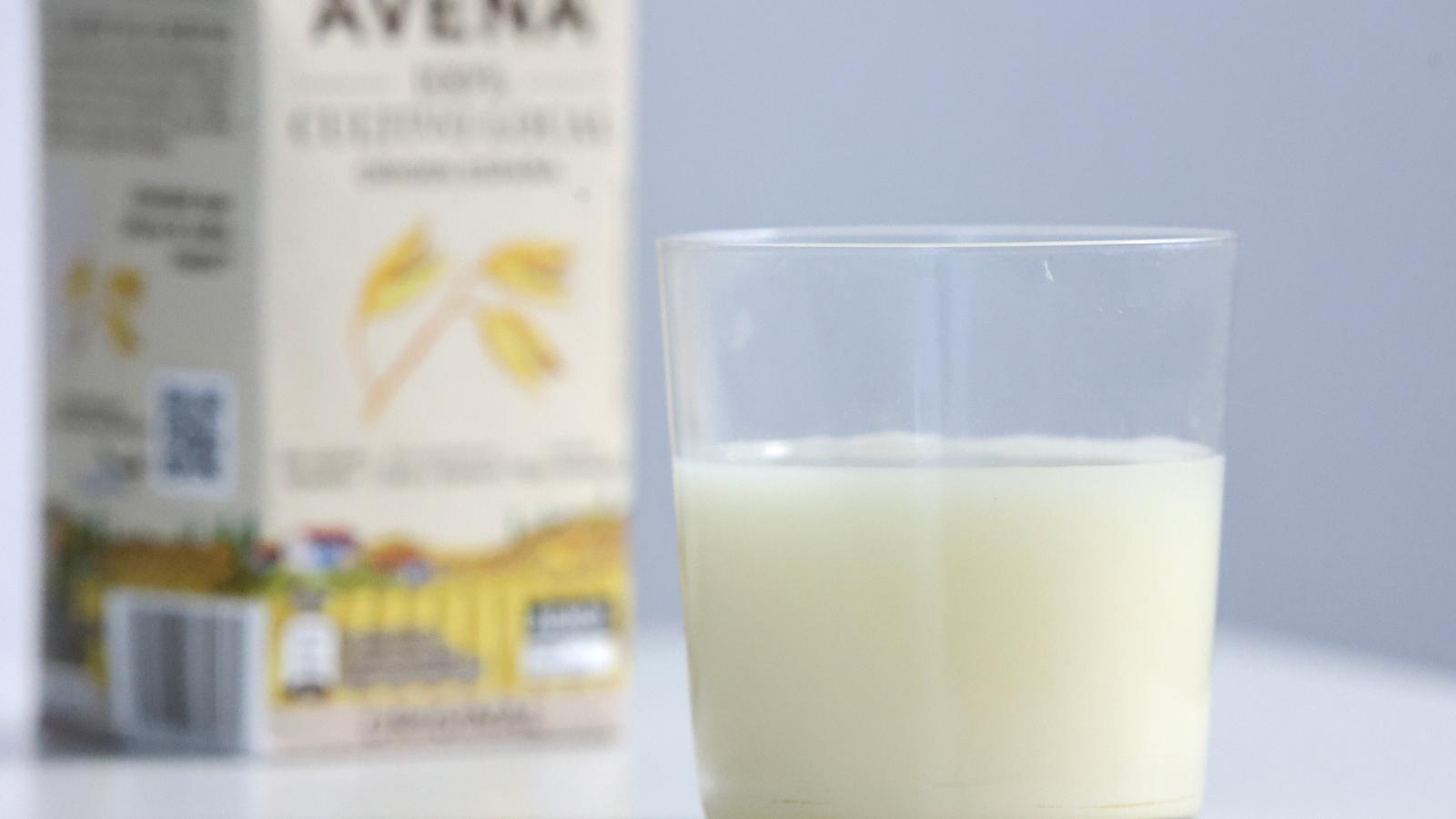Can we say oat milk?
It's becoming increasingly common to find products labeled as oat drink, oat milk, or hafer drink on supermarket shelves—physical or virtual. The variety of names is no coincidence: it reflects both the diversity of the market and the complexity of a linguistic issue that combines tradition, innovation, and terminological controversy.


If we consult the Dictionary of the Institute of Catalan Studies (DIEC2), milk is the "white or yellowish fluid secreted by the mammary glands of female mammals, which serves to nourish their young." This is surely the restrictive definition defended by part of the dairy industry—ignoring the last part of the definition, it is clear: "For the nourishment of their young"—especially in relation to European regulations governing trade names.
However, milk is also a "drink made with almonds [soy, chicheros, cashews, oats, rice, coconut, hazelnuts...] and milk or another liquid," such as, for example, water. In Catalan, the word 'leche' has been used for centuries to designate liquids of non-animal origin: "It is no less old [14th century] in certain combinations such as almond milk" (already in Eiximenis). In other words, milk is the "juice of certain plants comparable, in color or other properties, to animal milk," according to the Catalan-Valencian-Balearic Dictionary (DCVB). And now that it's fig season, we can observe—when we harvest from the fig tree—fig milk, that "white juice contained in the stems and fruit of certain fig trees." Likewise, milk is a "white juice derived from certain mineral substances," such as antimony, mercury, mountain, or earth milk. And, of course, milk is also commonly known as seminal fluid.
Animal or vegetable
The drink, due to its meaning, is a "liquid that is drunk, usually excluding clear water" (DIEC2, sv Bebida, 11). Therefore, whether animal or vegetable, milk is both milk and drink.
As for the plant, the most vivid form in Catalan today is 'avena'. This word comes from the Latin passive participle 'avena'.cĭbāta', derived from the verb 'cibare' ('to feed, to give fodder to the horses') and, in turn, from 'cĭbus' ('food, nourishment'). The Romanesque continuators of 'cibata', including Catalan, initially designated any cereal intended for livestock. Later, the word became specialized: in Catalan, Occitan, and Aragonese, it came to identify what in Latin was called "keep it up", while in Spanish and Portuguese it was associated with 'hordeum' (cat. 'barley'; cast. 'onion').
Over time, a process of lexical specialization took place: the originally generic term became the specific name of a specific species within the semantic field of grasses. In the oldest documentation, the word 'avena' (with a 'd' and 'v') did not specifically designate oats, but was used as a generic term for different cereals. Thus, in an 11th-century document from Almadraba, the generic word is used: "Sesteros two of oatsHowever, from the 12th century onwards, a process of semantic restriction was observed which led to oats being identified exclusively with oats (Avena sativa; a cereal grown for both animal and human consumption). This is shown in a Cerdanian document around the year 1182 in which a clear opposition is observed between oats and other cereals: "A sester of tritico, one of barley, one of oats of brazage".
The word 'oats', coming directly from the Latin 'oatmeal', is today a word in decline in the Catalan language. According to the Etymological and Complementary Dictionary of the Catalan Language (DECat), until the end of the Middle Ages, the cereal we know today as 'oats' was usually designated by the name 'oats'. Medieval literary and legal sources attest to this. Thus, Customs of Tortosa It reads: "Cafiz de formento, barley or oats or millet"; and in the Consolat de Mar: "Forment, barley, oats and all large wheats and small ones". Similarly, a document from Tortosa of 1340 includes the prohibition of "buy forment, barley, oats, or any other type of wheat".
This use has coexisted, since the 13th century, with the expansion of the term 'oats', which in its origins – as we have seen – was 'the food intended for livestock'. Joanot Martorell, in Throwing the White Away (1490), uses the plural 'avenas' with this meaning of 'cereals for animals': "Go around the houses making them take out cereals and oats".
This semantic phenomenon has a sociolinguistic and cultural interest: in the Catalan lands, the reference cereal as feed was oats, while in the Castilian areas it was onion (''hordeum', cat. 'barley'). The terminology reflected the differences in agricultural and livestock practices in each linguistic domain.
Over the centuries, the word 'avena' has gradually disappeared from general Catalan, although its use has been preserved in the Valencian Community. The DCVB still records medieval examples: "The storm said that barley turned into oats" (Lull, Tree of knowledge, 14th century). However, in the rest of the Catalan-speaking world, 'avena' has been completely replaced by 'avena', as also confirmed by DIEC2, which defines 'avena' simply as a synonym of 'avena'.
Agricultural practice and habits
Thus, the history of this word illustrates how language, in contact with agricultural practices and consumer habits, selects and reorients the lexicon.
In short, whether we're making a coffee with oat milk or a bowl of iced oat drink, either way is appropriate.
After all, all of this written here is just milk!
